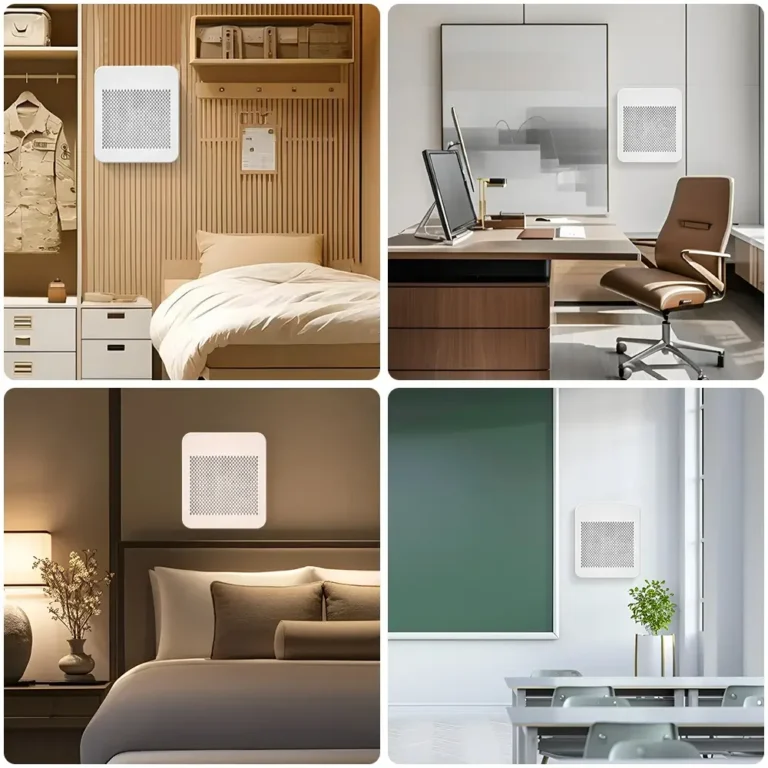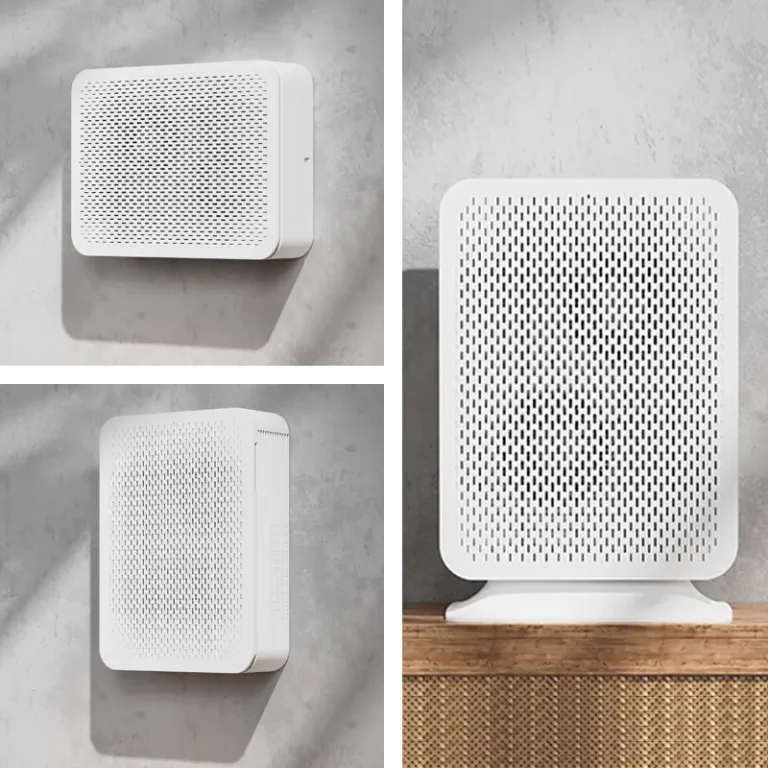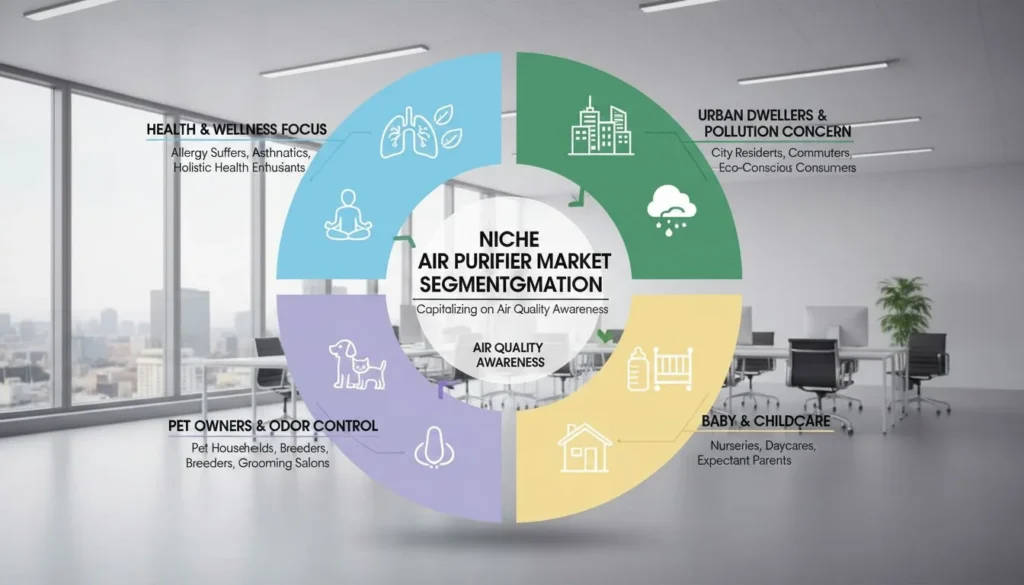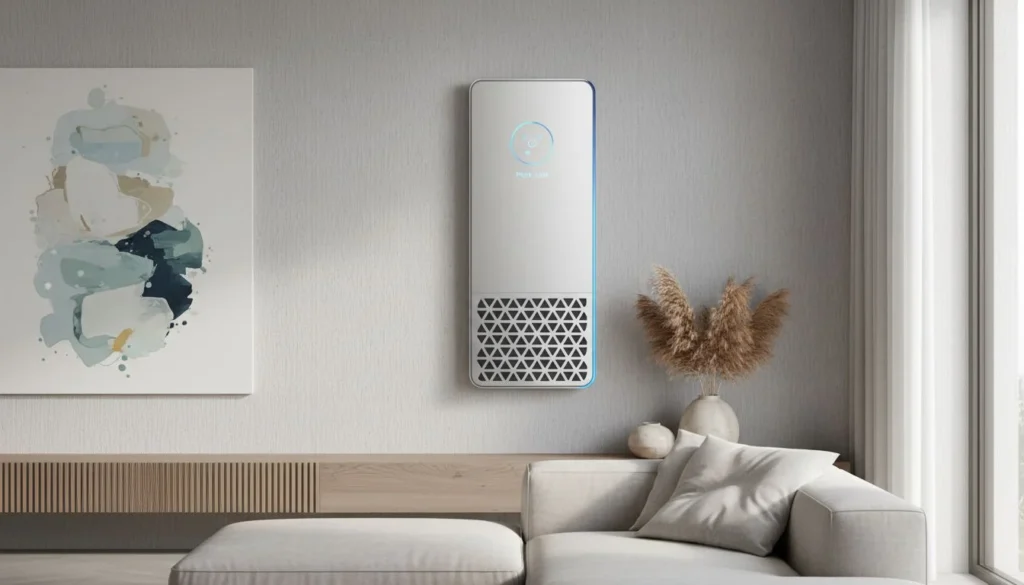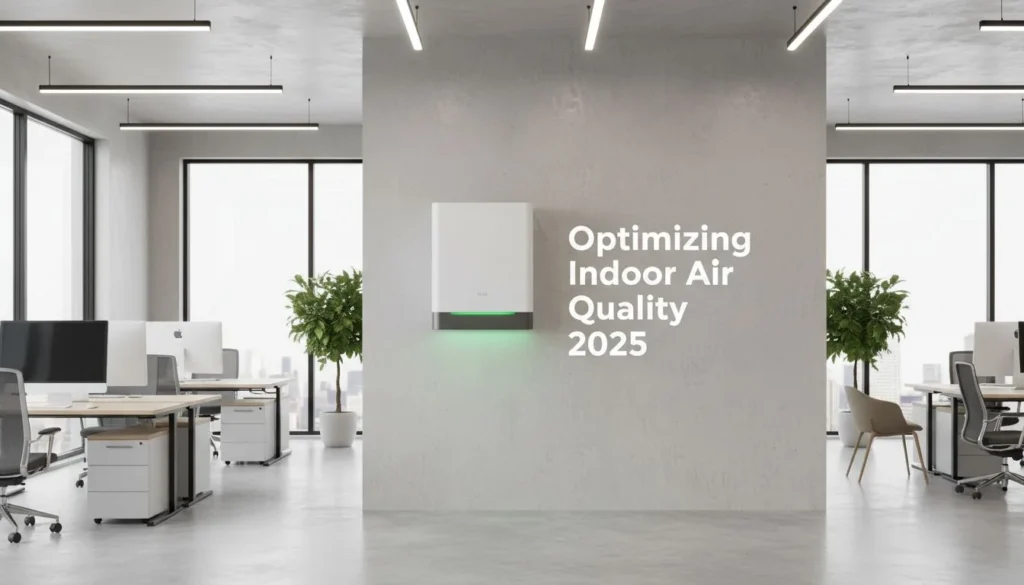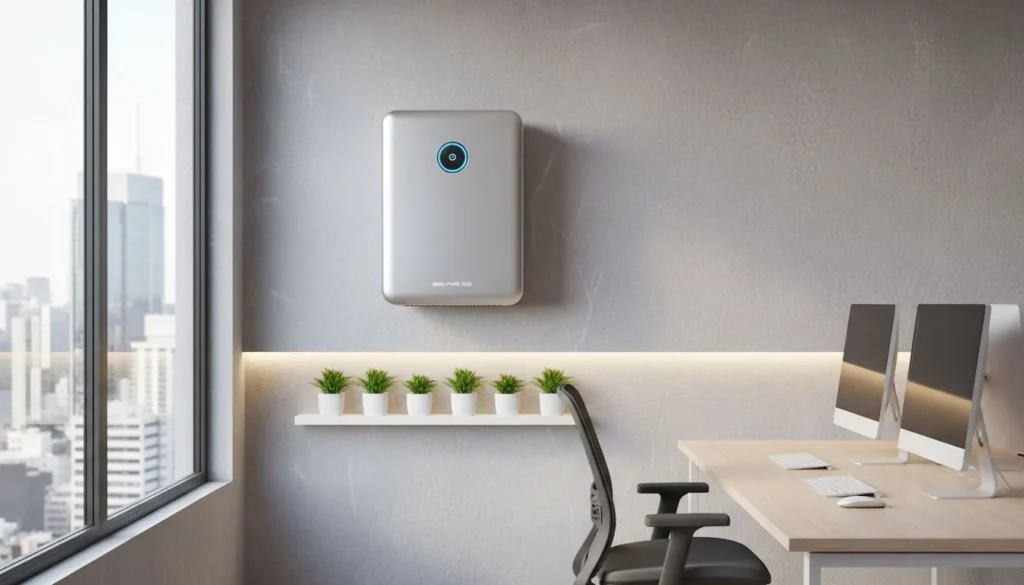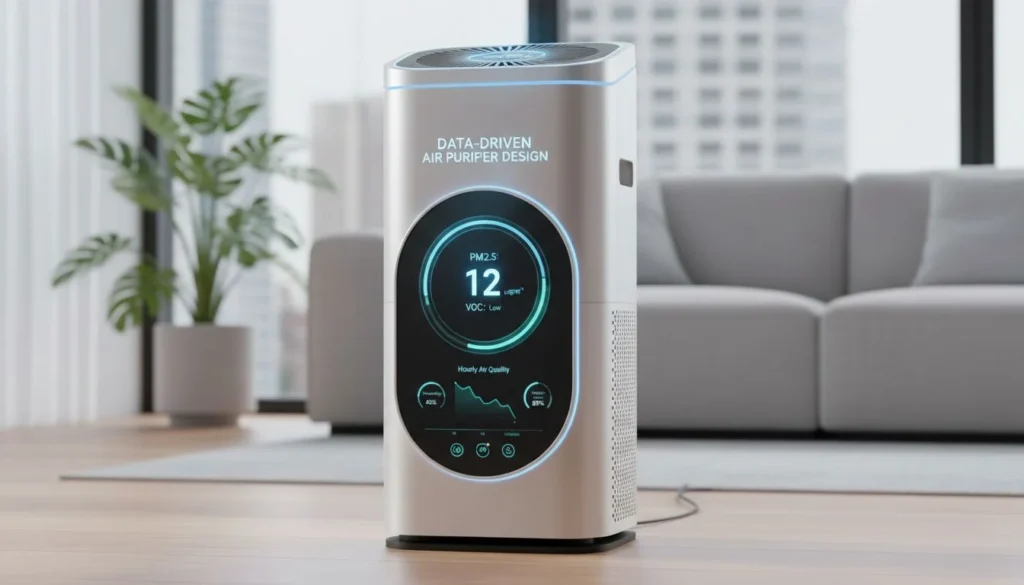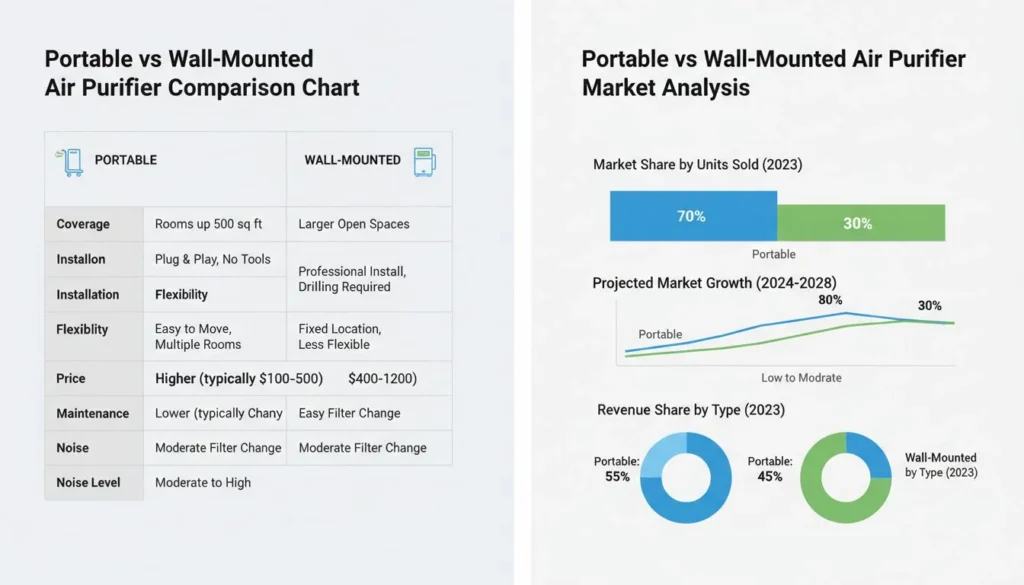Il radon è un gas naturale. Tuttavia, il pericolo arriva quando entra in casa e inizia a crescere e ad aumentare. Scoprite come rimuovere e mitigare il gas radon nei vostri spazi interni!
Il radon è un gas prodotto da alcuni metalli, come l'uranio. È presente nei terreni, nelle rocce e nelle acque sotterranee. Si può dire che il radon è presente intorno a noi, ma solo a livelli sicuri.
Tuttavia, è bene ricordare che il radon può penetrare nelle case e negli edifici. Una volta penetrato, può accumularsi e crescere nel tempo. Livelli elevati di radon sono collegati a varie malattie respiratorie, come il cancro. Non è il caso di esporsi a una situazione così preoccupante.
Continuate a leggere per saperne di più sul radon e sulle strategie di mitigazione per controllarlo, tra cui l'uso di purificatori d'aria di alta qualità.
Da dove viene il radon?

Fonte immagine: iStockphoto
Il radon è un gas radioattivo prodotti dalla degradazione di uranio, radio e torio. Questi metalli sono radioattivi e di solito sono presenti nelle acque sotterranee, nelle rocce e nel suolo. Poiché il radon viene prodotto nel terreno, la sua esistenza non è anomala. Infatti, siamo esposti ad esso.
Inoltre, il radon può fluire anche attraverso le acque superficiali, le acque sotterranee e l'aria. È quindi probabile che il gas radon possa entrare anche nella linea di alimentazione dell'acqua. È interessante notare che la concentrazione di radon nell'acqua proveniente dai pozzi è superiore a quella dell'acqua proveniente da fonti superficiali.
Inoltre, il radon è presente nel gas naturale, soprattutto quello a contatto con l'uranio sotterraneo o con rocce/terreni contenenti radon. Il radon si mescola all'aria e viaggia attraverso le tubature di distribuzione e di servizio. Di conseguenza, è probabile che il radon sia presente anche in stufe, scaldabagni, forni e stufe.
I pericoli del radon si presentano quando si è esposti ad esso per lungo tempo e in grandi quantità. Anche la vostra storia di fumatori potrebbe innescare i fattori di rischio di malattie legate al radon. Installazione purificatori d'aria di grandi dimensioni è necessario per ridurre al minimo l'esposizione al radon.
È normale la presenza di radon nell'aria?

Fonte immagine: iStockphoto
Sì. Il radon non è un gas di origine antropica. Il radon non è un gas prodotto dall'uomo. Dal punto di vista scientifico, il radon è un derivato naturale dell'ambiente. Ad esempio, è presente nel suolo e nelle rocce. Anche il processo di combustione dei combustibili fossili e del carbone rilascia radon.
L'unico problema è se il livello di radon è troppo alto. Secondo gli esperti, il livello di sicurezza del radon non dovrebbe superare i 4,0 pCi/L. Ma questo livello è già allarmante. Tenete presente che il livello medio di radon in ambienti esterni è di appena 0,4 pCi/L. La mitigazione è importante in questo caso.
Il radon può essere pericoloso?

Fonte dell'immagine: Unsplash
Sì. L'esposizione prolungata ed eccessiva al radon è sicuramente dannosa per la salute.
Quando il radon entra nel corpo, il gas produce radiazioni in tutti i polmoni. Secondo gli esperti, piccole quantità di radon non sono così dannose. In caso contrario, la situazione diventa problematica.
Il radon danneggia i rivestimenti dei polmoni a livello cellulare. Per questo motivo, una persona esposta al radon presenta un rischio elevato di sviluppare il cancro ai polmoni. In base ai dati disponibili, circa 20.000 decessi per cancro ai polmoni sono dovuti all'esposizione al radon. Anche se i decessi legati alle sigarette sono ancora più elevati, i numeri restano significativi.
È quindi sbagliato minimizzare i rischi che il radon può causare alla salute. Il problema deve essere affrontato in modo adeguato.
Aree comuni della casa in cui è presente il radon
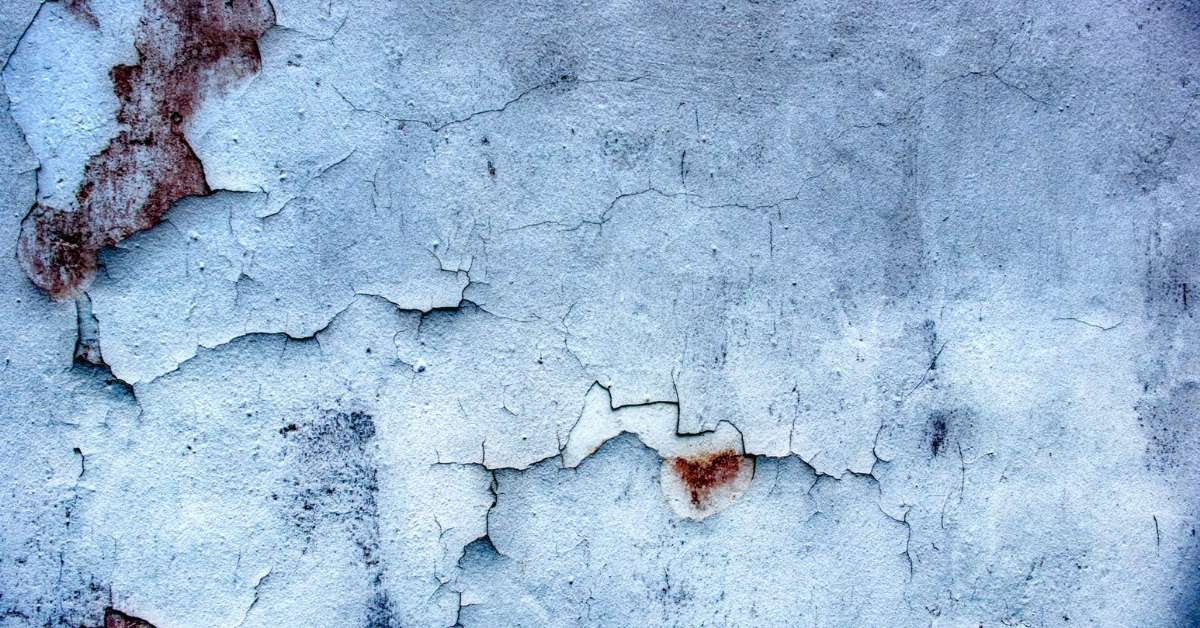
Fonte dell'immagine: Unsplash
Il radon è un tipo di gas. Pertanto, la sua permeabilità gli consente di entrare facilmente nelle case e negli edifici. Ci sono alcune parti della vostra proprietà in cui il gas radon può passare. Eccone alcune.
Crepe sui pavimenti in calcestruzzo
Poiché il radon viene solitamente emesso nel terreno, è inevitabile che possa raggiungere i pavimenti. Pertanto, se i vespai o gli scantinati presentano crepe nella pavimentazione, è probabile che il gas penetri da lì. È quindi essenziale riparare queste fessure per evitare che il radon pervada i vostri spazi.
Crepe sulle pareti
È allarmante che il radon possa entrare in casa anche se il pavimento è completamente sigillato. Se ci sono fessure e crepe nelle pareti, il radon può penetrarvi. Anche in questo caso, è importante installare strategie di mitigazione per mantenere le pareti impermeabili all'ingresso del radon. Se le pareti iniziano a creparsi, riparatele subito.
Ma anche se non ci sono crepe, il radon può comunque entrare nelle pareti. In particolare, può passare attraverso le cavità delle lastre o dei blocchi. Sigillarle correttamente è il modo per tenere lontano il gas nocivo.
Cuciture sui tubi di servizio
Anche le tubature di servizio dell'abitazione sono porte di ingresso per il radon. In alcuni casi, le fessure sono troppo grandi, il che consente al gas di intrufolarsi e di penetrare negli spazi abitativi. Gli installatori professionisti possono aiutarvi a risolvere questo problema.
Spazi vuoti
Finché ci sono vuoti nei vespai, il radon può entrare. Questi aspiratori aspirano le sostanze gassose sotto di loro. Anche se il vespaio è dotato di sfiatatoi, è comunque probabile che i piccoli vuoti scoppino. Di conseguenza, assorbono il radon e lo diffondono gradualmente in tutta la casa.
Perché è importante la depurazione dal radon?
Sono molti i rischi che il radon può comportare per la salute, soprattutto in caso di esposizione prolungata. Ad esempio, il radon può aumentare il rischio di sviluppare il cancro. Questo è il motivo per cui è necessario fare del proprio meglio per controllare o eliminare la sua presenza in casa.
Poiché il radon è qualcosa con cui non vogliamo avere a che fare, è fondamentale disporre di meccanismi di mitigazione efficaci contro questo fenomeno. Un approccio che si può provare è l'uso di depuratori d'aria. Per coloro che hanno un grave problema di radon, è necessario rivolgersi a un professionista dell'eliminazione del radon.
Aggiunta di un depuratore d'aria per eliminare il radon
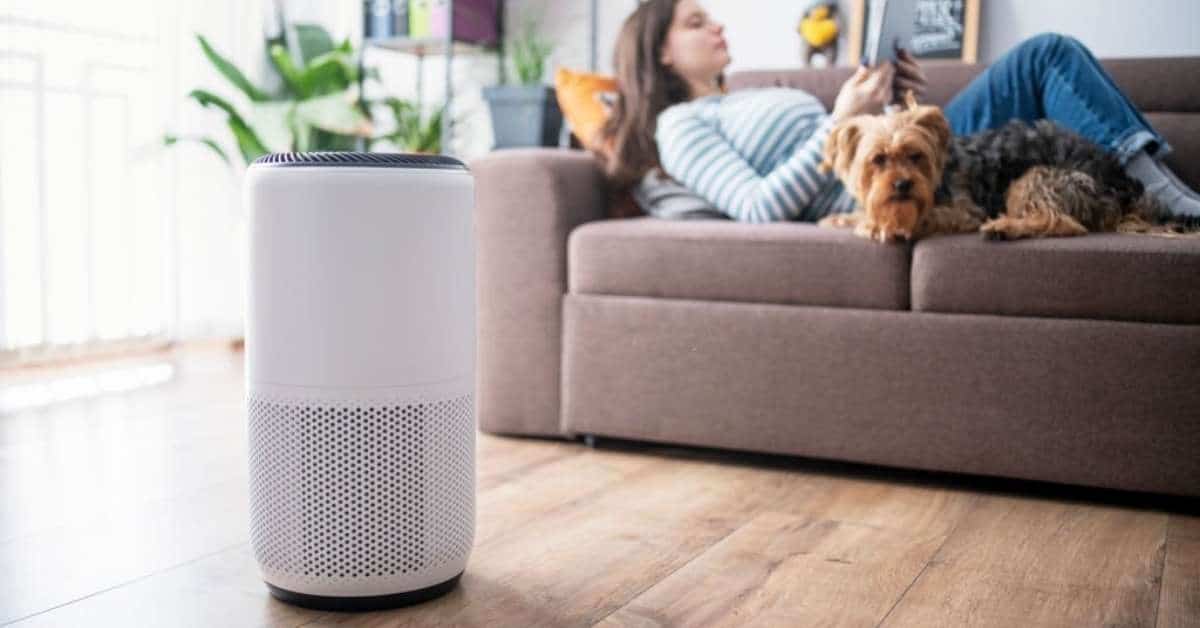
Fonte immagine: iStockphoto
I depuratori d'aria sono apparecchi essenziali per le case e le proprietà con problemi di radon. Naturalmente, questi depuratori d'aria potrebbero non essere in grado di gestire livelli elevati di radon. Ma si può garantire che questi dispositivi possono aiutare a controllare la loro diffusione.
Con questi depuratori d'aria, si riducono al minimo le possibilità di incorrere in un'esposizione al radon. Continuate a leggere per saperne di più su questi depuratori d'aria e sui vantaggi che apportano alla qualità dell'aria interna.
Perché un depuratore d'aria è importante per migliorare la qualità dell'aria?
L'inquinamento dell'aria interna è oggi un problema. Dopo tutto, esiste una pletora di contaminanti che possono esistere all'interno e all'esterno delle nostre case, edifici e proprietà. I normali mezzi di purificazione dell'aria, come l'apertura delle finestre o la regolare pulizia con l'aspirapolvere, non sono in grado di eliminare questi inquinanti presenti nell'aria.
Particelle, sostanze gassose, prodotti chimici e polveri sono tra gli elementi che permangono nell'aria. E la cosa peggiore è che normalmente non li vedete. Ci si accorge solo che c'è un problema nell'aria che si respira a causa delle frequenti manifestazioni allergiche e degli attacchi d'asma. Le persone che si trovano all'interno della vostra casa si ammalano più spesso di quanto non accada.
I depuratori d'aria sono progettati per tenere sotto controllo gli inquinanti presenti nell'aria. Assorbono l'aria di una stanza e la fanno passare attraverso una serie di filtri. Successivamente, l'aria viene reimmessa nell'ambiente, ma questa volta più pulita e fresca.
Depuratori d'aria per la rimozione del radon
Sebbene esistano altre strategie estese e più semplici per eliminare il radon dalla vostra proprietà, i depuratori d'aria rimangono un'opzione valida da provare. I depuratori d'aria sono in grado di rimuovere gradualmente i livelli da bassi a moderati di radon negli spazi abitativi. Sono dotati di filtri specializzati in grado di svolgere questo compito.
In particolare, i depuratori d'aria sono dotati di filtri a carbone che catturano una pletora di composti gassosi, sostanze chimiche e altri elementi non solidi presenti nell'aria. Pertanto, è possibile assicurarsi che questi dispositivi siano in grado di ridurre o controllare i livelli di radon ovunque si viva.
I depuratori d'aria per la rimozione del radon sono sicuri?
Sì. Tecnicamente parlando, i depuratori d'aria che utilizzano mezzi filtranti sono l'opzione più sicura per la purificazione dell'aria. Infatti, questi depuratori d'aria non generano residui o emissioni nocive nell'aria quando sono in funzione. Indipendentemente dal tempo di utilizzo, l'aria interna rimane pulita.
L'unico tipo di purificatore d'aria di cui bisogna diffidare è quello a ozono. Questi dispositivi generano ozono nell'aria. Si sostiene che l'ozono neutralizzi i contaminanti presenti nell'aria.
Tuttavia, tenete presente che l'ozono è un composto gassoso che irrita i polmoni. Può persino peggiorare gli effetti del radon nell'ambiente. Inoltre, non esiste alcuna prova scientifica che l'ozono sia un meccanismo efficace per la filtrazione dell'aria. Quindi, a questo punto, dovreste limitarvi ai depuratori d'aria basati su filtri.
Come funzionano i depuratori d'aria per rimuovere il radon?
Il radon è un gas prodotto naturalmente nel terreno. Trattandosi di un gas, non può essere eliminato con mezzi convenzionali. Infatti, gli installatori professionisti di radon utilizzano procedure di mitigazione specializzate per affrontare le aree con livelli elevati di radon.
Nel caso dei purificatori d'aria, i filtri a carbone sono il mezzo di rimozione. Questi filtri al carbone hanno un design speciale che consente loro di intrappolare elementi gassosi, sostanze chimiche e composti organici volatili. I filtri HEPA, i pre-filtri e le luci UV non sono in grado di eliminare questi inquinanti presenti nell'aria.
Questi filtri a carbone attivo intrappolano le molecole sulla loro superficie. Questi filtri sono porosi, il che consente loro di espandere la superficie effettiva in cui si agganciano i contaminanti.
Rimozione del radon con il depuratore d'aria: Passo dopo passo
I depuratori d'aria possono rimuovere diversi contaminanti attraverso i loro filtri. Quando si tratta di sostanze gassose come il radon, sono coinvolti i filtri a carbone attivo. Di seguito sono riportate le fasi specifiche di come i depuratori d'aria rimuovono il gas radon.
- Il purificatore d'aria utilizza la sua ventola per aspirare l'aria.
- Una volta che l'aria è all'interno del purificatore d'aria, viene fatta passare attraverso diversi strati di filtri.
- È sul filtro a carbone che vengono intrappolate le sostanze gassose attraverso la processo di adsorbimento. Quest'ultimo funziona intrappolando le sostanze chimiche e le sostanze in superficie, impedendo loro di circolare nuovamente nell'aria.
- L'aria pulita viene quindi reimmessa nell'ambiente.
Il processo viene ripetuto finché la presenza di contaminanti non è sotto controllo. In questo modo i depuratori d'aria eliminano le sostanze chimiche, i gas irritanti e i composti organici volatili.
Quanto tempo impiega il radon ad assestarsi dopo la rimozione?
In un contesto ideale, un impianto di rimozione del radon efficace eliminerebbe il radon in poche ore. Tuttavia, ciò non accade. Infatti, numerosi fattori possono influire sulla rapidità della rimozione.
Un fattore è la tecnica di mitigazione implementata. Alcuni sistemi sono piccoli, mentre altri sono robusti. Ma quelli più grandi sono più difficili da installare. Allo stesso tempo, anche le dimensioni della casa sono un problema. Le case più spaziose possono richiedere un certo tempo prima che i livelli di radon siano controllati.
È necessario considerare anche la fonte. A seconda del luogo in cui si vive, potrebbe essere impossibile eliminare il radon. La cosa migliore da fare è controllare il radon a livelli sicuri, in modo da evitare problemi respiratori.
Cose da considerare prima di acquistare un depuratore d'aria per la rimozione del radon
L'efficacia di un purificatore d'aria è essenziale per la rimozione del radon. Per questo motivo, prima di scegliere un depuratore d'aria per le vostre case e i vostri edifici, dovete tenere conto delle seguenti considerazioni.
- Filtro a carbone attivo - È il filtro che cattura ed elimina le sostanze gassose come il radon. Senza di esso, il purificatore d'aria non sarà in grado di filtrare le emissioni di radon provenienti dal terreno. I purificatori d'aria HisoAir contengono questo particolare filtro, quindi è necessario controllarli.
- Portata di aria pulita - La portata d'aria pulita (CADR) è la misura della quantità d'aria che un purificatore d'aria è in grado di trattare in un determinato periodo. In particolare, maggiore è la portata d'aria pulita, maggiore è la quantità di contaminanti presenti nell'aria che può essere eliminata. Per gli ambienti di grandi dimensioni, è necessario un purificatore d'aria che fornisca un flusso d'aria potente per impedire agli inquinanti presenti nell'aria di proliferare.
- Filtro HEPA - Un purificatore d'aria richiede l'uso di filtri HEPA. Con questo filtro, il depuratore d'aria rimuove il 99,9% dei contaminanti microscopici, come allergeni e agenti patogeni. Non è in grado di catturare le sostanze gassose, ma è in grado di trattare altri inquinanti che potrebbero aggravare le malattie respiratorie.
- Metratura - In qualsiasi configurazione, è necessario valutare la copertura effettiva di un purificatore d'aria. In sostanza, è necessario abbinarla alla metratura della stanza in cui si desidera collocare il purificatore d'aria. Quindi, se il vostro seminterrato è di circa 300 metri quadrati, avete bisogno di un purificatore d'aria che abbia una copertura effettiva di almeno 300 metri quadrati. Più alto è il numero, meglio è.
I depuratori d'aria migliori per l'accumulo di radon
Oggi sul mercato esistono numerosi depuratori d'aria. Ma niente è meglio dei seguenti depuratori d'aria e delle loro prestazioni contro i contaminanti gassosi come il radon:
1. Modello HisoAir HA-1968
| Copertura | Tipi di filtri | |
| Modello HisoAir HA-1968 | 1.937 metri quadrati | Filtro HEPA, filtro a carboni attivi, pre-filtro, luce UVC |
| HisoAir Modello HA-1601 | 1011 metri quadrati | Filtro HEPA, filtro a carboni attivi, pre-filtro, luce UVC |
| HisoAir Modello HA-139 | 516 metri quadrati | Filtro HEPA, filtro a carboni attivi, pre-filtro, luce UVC |
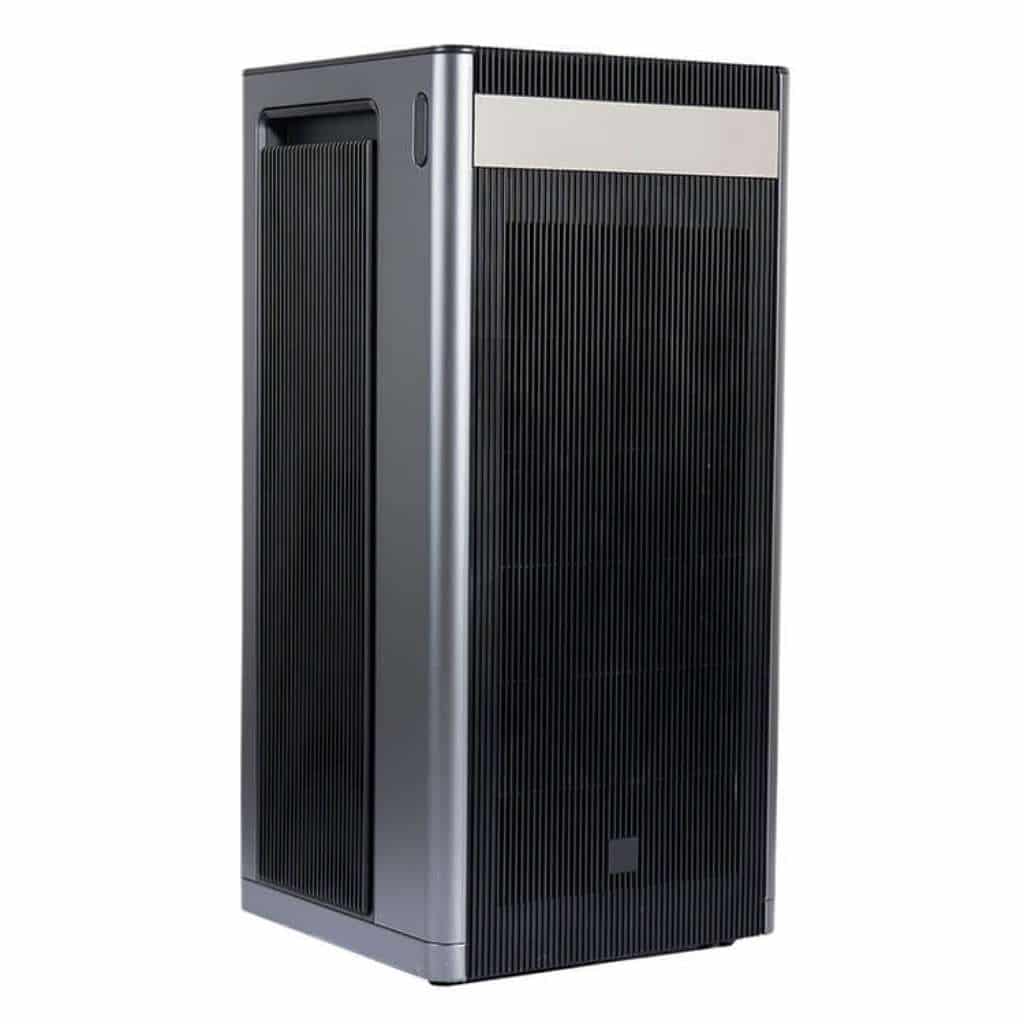
Fonte dell'immagine: HisoAir
Iniziamo questo elenco con il modello HisoAir HA-1968. Questa particolare linea di purificatori d'aria è progettata per grandi spazi, come uffici, scuole e immobili commerciali. È in grado di effettuare una purificazione dell'aria completa, grazie all'elevato tasso di erogazione dell'aria pulita (CADR) di 1.500 m3/h. Questa cifra indica che questo purificatore d'aria è in grado di trattare e purificare l'aria in modo efficiente anche se viene collocato in stanze di ampia metratura.
Inoltre, questo purificatore d'aria è dotato di filtri impeccabili. Il suo filtro a carboni attivi funziona molto bene nel catturare sostanze gassose, come il radon. È inoltre in grado di rimuovere i composti organici volatili e altre sostanze chimiche che possono causare problemi polmonari. È inoltre dotato di un'interfaccia ergonomica che consente di utilizzarlo correttamente in base alle proprie esigenze.
| PROS | CONS |
|
|
2. HisoAir Modello HA-1601
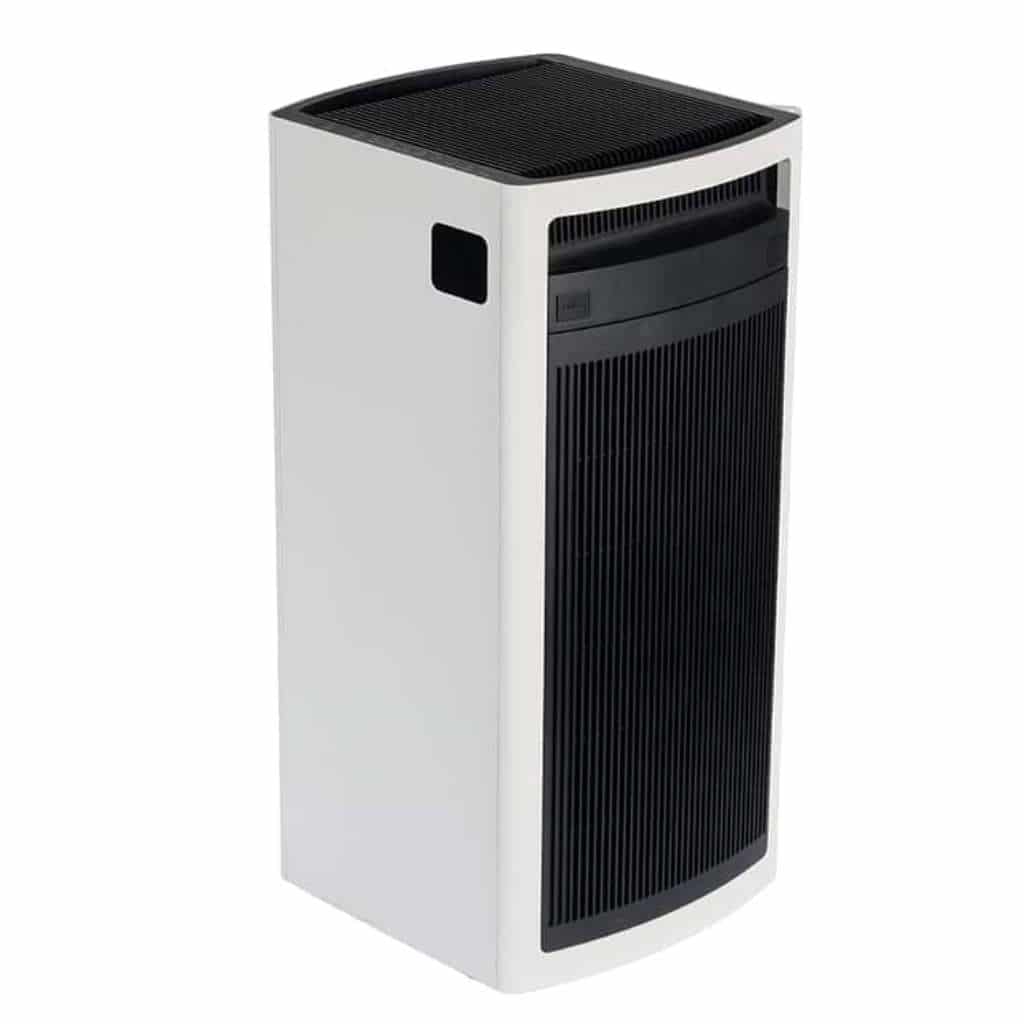
Fonte dell'immagine: HisoAir
Se volete mantenere un livello sicuro di gas radon nella vostra casa, dovete installare il modello HA-1601 di HisoAir. Questo purificatore d'aria è stato progettato per funzionare in aree in cui gli inquinanti presenti nell'aria sono molto concentrati, come scantinati e spazi abitativi. È uno strumento efficace per catturare il radon, grazie al suo filtro a carboni attivi di alta qualità. Quest'ultimo adsorbe varie sostanze gassose, impedendo loro di circolare nuovamente nell'aria.
Allo stesso tempo, il modello HisoAir HA-1601 ha un design ad alta efficienza energetica. Può funzionare ininterrottamente senza provocare un aumento della bolletta elettrica. Si tratta di una caratteristica essenziale per gli ambienti che necessitano di una costante purificazione dell'aria. Inoltre, il suo funzionamento è silenzioso, in modo da non creare fastidi in casa, indipendentemente dal luogo in cui viene collocato.
| PROS | CONS |
|
|
3. HisoAir Modello HA-139
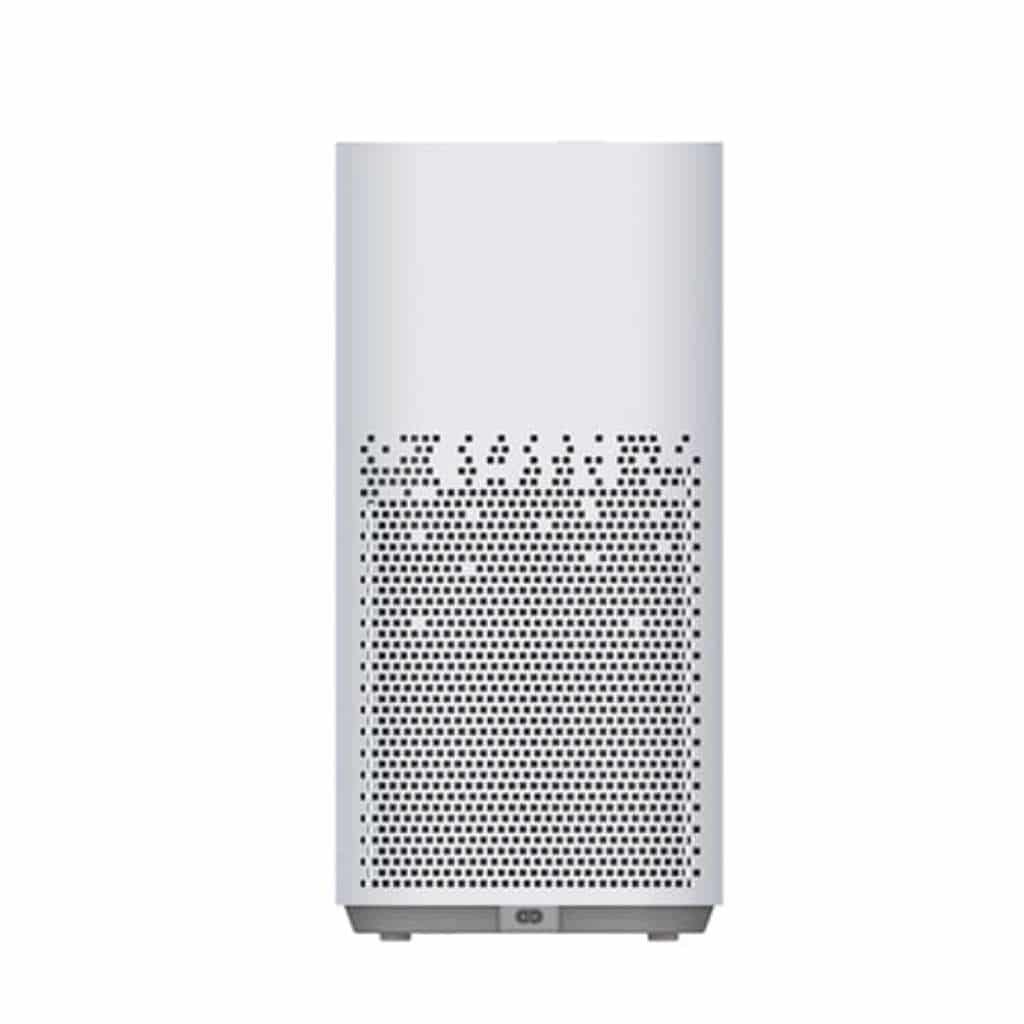
Fonte dell'immagine: HisoAir
Quando si tratta di eliminare gli inquinanti gassosi e chimici, ci si può sempre affidare al modello HA-139 di HisoAir. Questo particolare purificatore d'aria è dotato di un innovativo filtro a carbone che intrappola queste sostanze gassose e i contaminanti che causano odori. È in grado di mantenere l'aria fresca, pulita e respirabile. Include anche altri filtri essenziali, come il filtro HEPA, che inibisce la proliferazione di microscopici inquinanti presenti nell'aria.
L'utilizzo di questo purificatore d'aria non vi darà mai problemi. Tutti i suoi comandi sono piuttosto semplici, per cui è possibile regolare le impostazioni ogni volta che lo si desidera. È interessante notare che questo purificatore d'aria include anche dei sensori di qualità dell'aria. In questo modo è possibile sapere se l'aria che si respira è priva di potenziali particelle che causano malattie. Nel complesso, il modello HA-139 di HisoAir è un ottimo purificatore d'aria per diverse applicazioni.
| PROS | CONS |
|
|
Come prevenire l'accumulo di radon dopo la rimozione
A seconda della gravità del problema, ci sono alcune cose che si possono fare per mantenere la casa libera dal radon. Ecco alcune di queste strategie:
- Dovreste prendere in considerazione la possibilità di migliorare il sistema di pavimentazione della vostra casa, soprattutto se non ha un'intercapedine. A tal fine, è possibile inserire uno strato permeabile ai gas al di sotto del pavimento. Uno spesso strato di ghiaia può fare al caso vostro. Successivamente, è necessario coprire il tutto con un telo di plastica, in modo che il radon non possa passare.
- Successivamente, si dovrebbe considerare l'installazione di un tubo a tenuta di gas dall'intercapedine o dal seminterrato verso il tetto. Il tubo aiuterà a sfogare gli elementi gassosi dal terreno e ad allontanarli dalla casa.
- Un approccio interessante consiste nel far passare una linea elettrica nel sottotetto. In questo modo, è possibile installare una ventola di ventilazione. Questo trasformerebbe il tubo in un sistema di aspirazione, assorbendo il gas e le sostanze chimiche dalla casa.
- Naturalmente, anche una sufficiente ventilazione dell'abitazione può contribuire a ridurre la contaminazione da radon.
Altri modi per eliminare il radon
Poiché il radon è un gas presente in natura, non è facile eliminarlo. Dopo tutto, il radon può esistere anche al di fuori della vostra proprietà. Alla fine, sarà in grado di entrare nelle vostre case e nei vostri edifici.
L'accumulo di radon è un problema, visto che non esiste un livello di sicurezza. La cosa migliore da fare è ridurre il livello al minimo possibile. Ecco come fare.
Trovare un professionista
La prima cosa da fare è contattare un professionista qualificato per valutare e affrontare la situazione. Negli Stati Uniti esistono programmi nazionali di competenza in materia di radon che consentono di entrare in contatto con questi professionisti.
Quando il livello di radon è elevato, sono necessari interventi tecnici e specializzati. Se l'appaltatore non è professionale, il problema non scomparirà. Anzi, potrebbe peggiorare. Una volta che l'appaltatore professionale è presente, sarà in grado di fornire le soluzioni adeguate. Ma naturalmente questo ha un costo.
Depressurizzazione attiva del suolo
Una delle soluzioni specifiche per tenere sotto controllo i livelli di radon è un sistema di depressurizzazione del suolo. Questo sistema non richiede grandi lavori di ristrutturazione della casa o dell'edificio.
Questo metodo è solitamente preferito dai proprietari di immobili perché è economicamente vantaggioso. È un metodo comune nelle case i cui scantinati o sotterranei hanno una pavimentazione in cemento. Con questo metodo, la pressione dell'aria tra il suolo e l'interno viene invertita. Ciò impedisce l'ingresso del gas radon nell'abitazione.
Anche in questo caso, rivolgendosi a un professionista è possibile sapere se questo particolare metodo di riduzione del radon è applicabile al proprio ambiente.
Depressurizzazione del muro a blocchi
Questo particolare sistema di riduzione del radon utilizza una canalizzazione e un ventilatore. Questi due componenti sono progettati per aspirare il gas radon attraverso le aperture cave dei muri a blocchi. In sostanza, questo metodo funziona se le pareti della casa sono fatte di blocchi di cemento o materiali simili.
L'efficacia di questo metodo dipende dal fatto che la pressione dell'aria nelle cavità è inferiore alla pressione dell'aria nel seminterrato. Quest'ultimo è il luogo in cui verranno installati i componenti di aspirazione e le tubature. Grazie alla differenza di pressione dell'aria, il gas radon viene estratto dal terreno. Di conseguenza, il radon verrebbe disperso prima di poter entrare in casa.
Questo metodo è molto efficace, ma richiede l'intervento di personale specializzato. Inoltre, è consigliato solo se il livello di radon è superiore a quattro picocurie per litro d'aria (pCI/L).
Sigillare crepe e spazi vuoti
Se i livelli di radon nella vostra casa non sono elevati, ci sono alcuni metodi che potete adottare per mantenerli tali. Una di queste strategie consiste nell'effettuare riparazioni, mirate alle crepe e agli interstizi nei muri e nei pavimenti.
Effettuando queste semplici riparazioni, sarete in grado di prevenire l'ingresso del gas in casa vostra. La cosa migliore di queste riparazioni è che potete farle da soli. In questo caso è essenziale disporre dei sigillanti corretti, come calafati e intonaci.
Naturalmente, se i danni sono troppo gravi, è necessario rivolgersi a un professionista per ripararli. Le riparazioni complete sono costose, ma possono davvero prevenire l'accumulo di radon.
Conclusione
Come si può notare, l'accumulo di radon è pericoloso per la salute. Può causare numerose complicazioni per la salute, soprattutto in caso di esposizione prolungata. Per questo motivo, è necessario adottare misure di mitigazione adeguate per le abitazioni e le proprietà che presentano livelli elevati di radon.
L'installazione di purificatori d'aria di alta qualità può prevenire l'inquinamento da radon all'interno della casa. Grazie ai loro filtri al carbonio, il gas radon non prolifererà mai nella vostra casa. Visitare HisoAir e conoscere alcuni dei migliori depuratori d'aria per il radon!
Consultate anche gli altri blog informativi!

